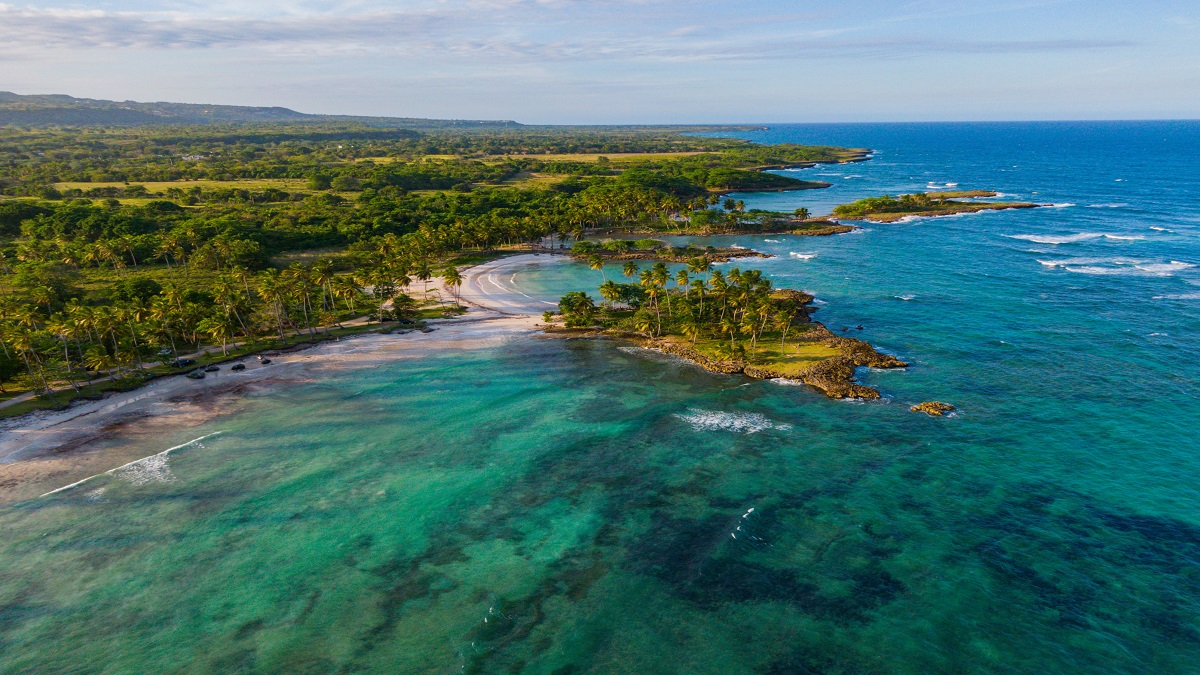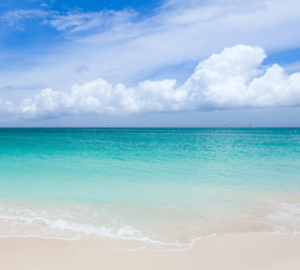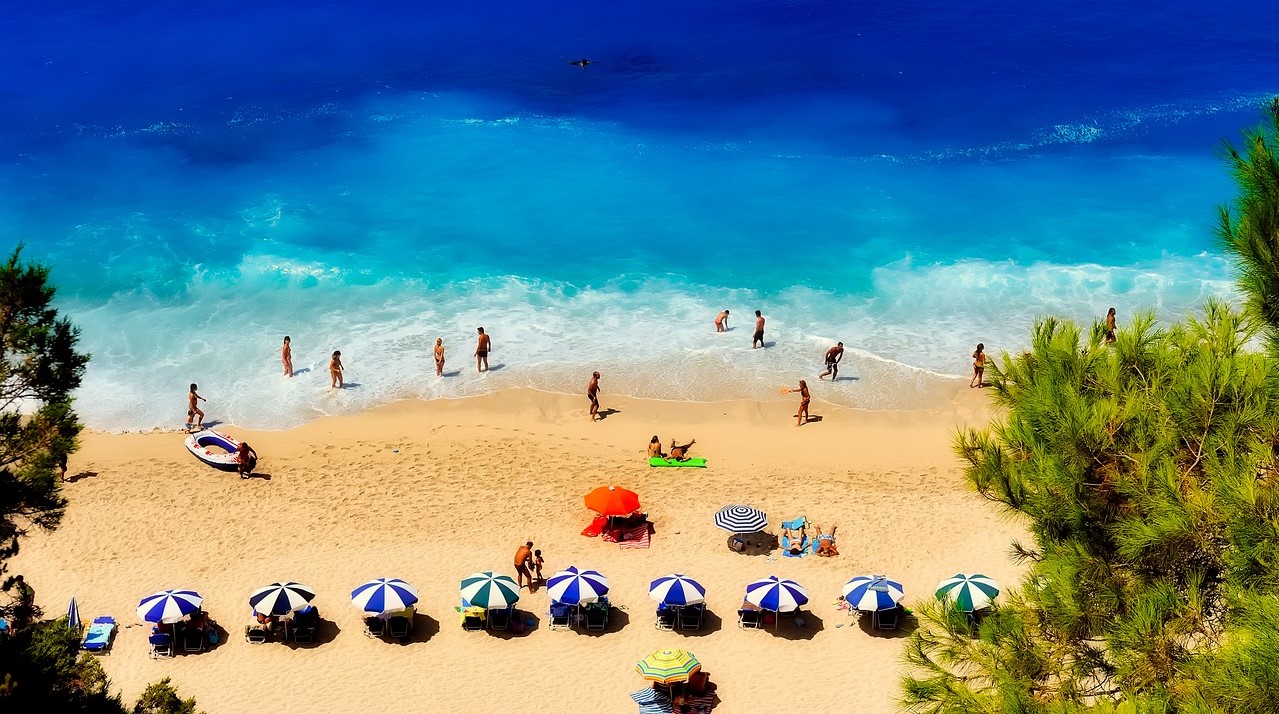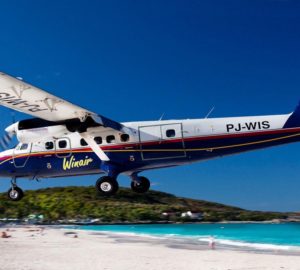If you’re thinking about someplace warm for some sun and sailing, the Caribbean may be the first places you might think of. But what’s involved in chartering a boat in the Caribbean? Where can you go, and how is the sailing?
Since there’s a lot to know about chartering a boat, we’ve put together your comprehensive guide to putting together your perfect getaway.
Where are the Caribbean Islands?
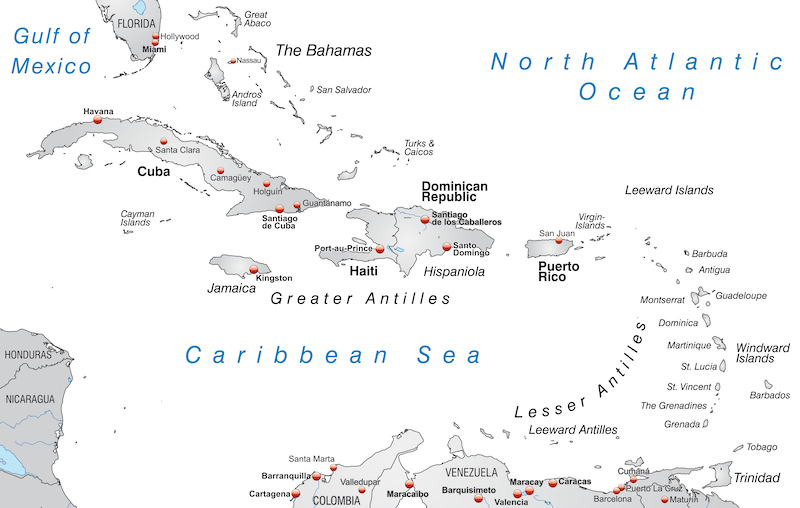
The Caribbean Sea lies south of the U.S. and the Bahamas, and Central America bounds it to the West, while Columbia and Venezuela bound it to the South. The eastern edge of the Caribbean is a string of islands, with the Atlantic ocean on the other side.
Islands dot every corner of the Caribbean, but when most people are considering a charter, they’re looking to the Eastern Caribbean. The Caribbean has delightful weather, but certain places are more suitable for sailing vacations due to geography and local conditions. Not that you can’t charter a yacht almost anywhere in the Caribbean – you can. But the eastern islands usually make your best first charter experience.
Caribbean Island Geography
The islands in the Caribbean are grouped together in a few named regions. Some are geographical, or reflect the history of the islands. There are numerous islands in each region, some of which are independent countries and others are possessions of larger countries.
The names can be confusing when they’re used in marketing materials or websites about places you can visit on your charter. But if you learn a few major groupings, it should all be pretty clear.
When speaking about travel in the Eastern Caribbean, it’s also common to hear cruising sailors refer to “up island” and “down island” directions. These are references for the relative positions of the islands in a north/south (up/down) direction. Saint Martin “down island” from the Virgin Islands, but “up island” from Antigua and St. Kitts.
Greater Antilles
The Greater Antilles consists of Cuba, Hispaniola, Puerto Rico, Jamaica, the Cayman Islands, and Navassa Island. Haiti and the Dominican Republic are on Hispaniola, while Navassa Island is closed to the public and has disputed ownership.
Lesser Antilles
Starting with the Virgin Islands east of Puerto Rico, the Lesser Antilles stretch east around the Caribbean. They are primarily a string of volcanic islands running south all the way to Grenada. The Lesser Antilles includes Trinidad and Tobago, even though geographically they are part of the South American continental shelf instead of the island chain.
The lesser Antilles are further split out into two subgroups, the Leeward and Windward islands.
Leeward Islands
The Leewards stretch from the Virgin Islands to Antiqua and Barbuda, and include Guadeloupe, Montserrat, Saint Kitts and Nevis, Saint Barths, Sint Eustatius, and Saint Martin. There are over thirty islands in the group, under independent governments and overseas foreign territories.
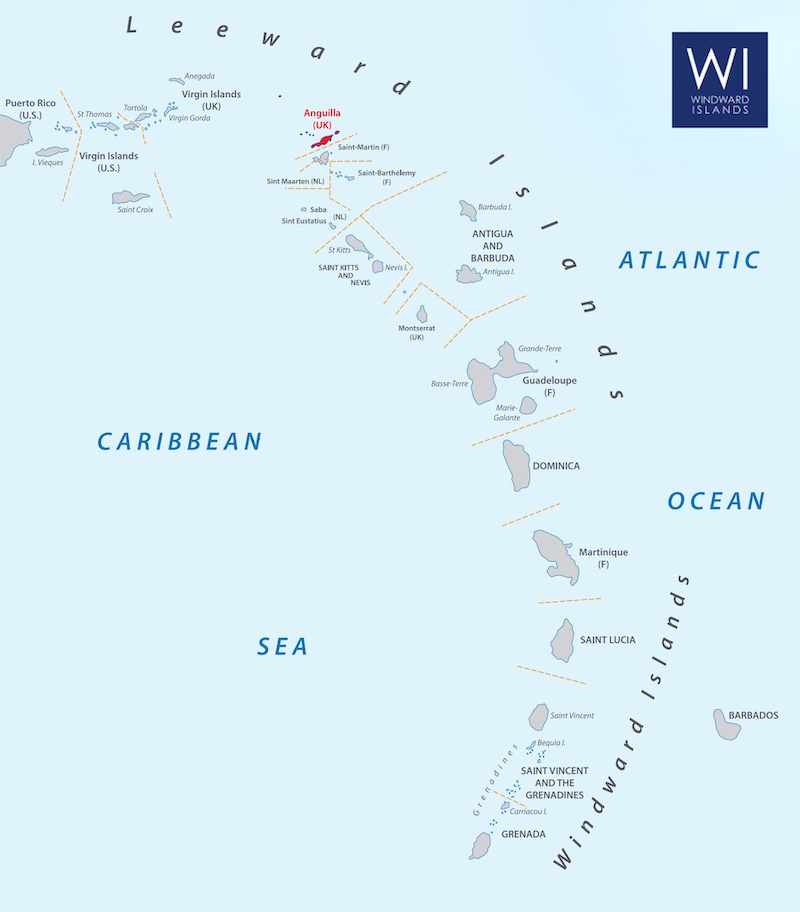
Windward Islands
Dominica is the dividing island between the windward and leeward groups. Other nations include Martinique, St. Lucia, St. Vincent and the Grenadines, Grenada, and Trinidad and Tobago and Barbados.
Islands versus Cays
It’s common to hear the terms “island” and “cay” used interchangeably. For most intents, they are interchangeable. But there is a difference between an island and a cay, but it’s not the size or the population. Islands can be small or large, and cays can be inhabited or uninhabited.
An island has fresh water from streams or springs, a cay does not. That’s the only distinction – on a cay, people must collect, desalinize, or bring in fresh water. This has little impact on your charter, since you’ll bring your water with you, anyway. So you can treat either as a desirable destination!
When is the best time to charter a yacht in the Caribbean?
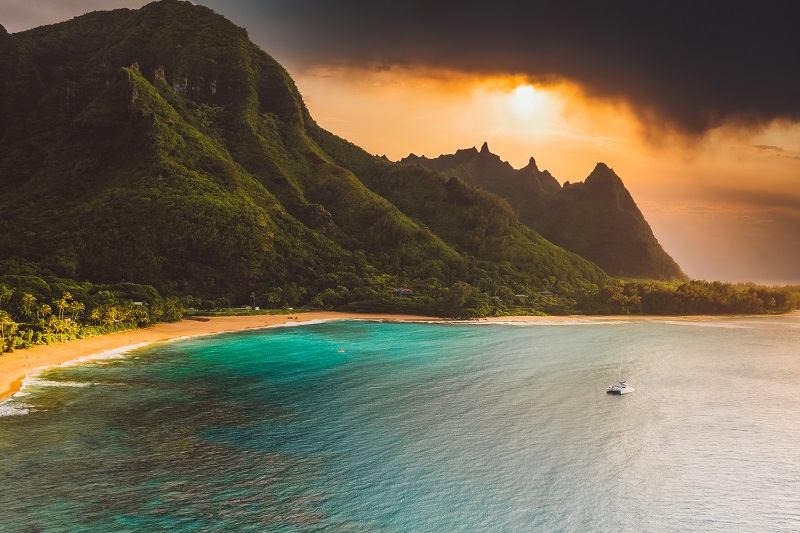
Caribbean weather is lovely year round, but some parts of year are better than others. The time you pick depends on your budget and preferences, and your risk tolerances and schedule.
Read also: HOW EARLY SHOULD YOU BOOK YOUR YACHT CHARTER?
Peak charter season is December to March
The absolute best time to charter in the Caribbean is from December through March. The weather is beyond delightful, with warm days and mild evenings you’ll avoid the higher summer heat and rainier weather.
It’s not without cost though. Since it’s the most popular time, it’s also the most expensive. Everyone else is trying to escape winter for that perfect Caribbean weather, too. So the highest charter rates of the year are during the holiday weeks and there are fewer boats available. Most fleets have fully booked their boats, and during the holiday weeks, there will be more people on the water compared to the shoulder and off seasons.
That doesn’t mean you can’t do it, but prepare to spend more for your charter and have company in every anchorage.
The shoulder seasons are a great time to visit
From March through June and October and November are just outside the peak seasons, and are still wonderful times to charter. The weather is still excellent, and the risks of hurricanes and named storms are relatively low. Because of lower demand, prices are more reasonable and there are even bargains to be found, and there will be fewer boats in every anchorage.
The shoulder seasons are an excellent choice if you’re looking to save a little money and aren’t pressed to take your charter in the peak season. Just take care to insure your trip, since there’s still a risk of a weather cancellation.
Take care for hurricane season (July to September)
Hurricane season officially runs from June 1 through November 30th, but the middle of the season can be the riskiest time to book a Caribbean charter. It also is warmer, with more rain. So it’s less popular, so there are good deals to be had and you may spend half the cost of a peak season charter.
The risk isn’t so much to life and limb while sailing, you’re unlikely to get caught on board by a hurricane during your charter. But the charter company may not let you go out with a storm on the horizon. Or you may wish to cancel if you don’t like the forecast. But most charter companies do not refund fees for “Force majeure” events like storms, so read the contract carefully.
Modern storm tracking and prediction is very good at identifying named storms in plenty of time to avoid them. In the worst-case scenario, a storm or depression may appear offshore at the start of your charter. You may have to cut your holiday short before it reaches you. But it’s also possible that predicted storms may show up as you’re packing to leave for vacation.
There are two ways to manage the risk of a hurricane season – a more southerly charter, and trip cancellation insurance. The Windward islands from St. Vincent to Trinidad have a lower risk of hurricanes, so the chances of a storm disruption are reduced. Make sure you have trip cancellation insurance that includes coverage for your charter and flights during hurricane season.
Rea also: 10 EXOTIC UNUSUAL SAILING DESTINATIONS YOU MUST VISIT
Why are the Caribbean islands so popular for yacht charters?
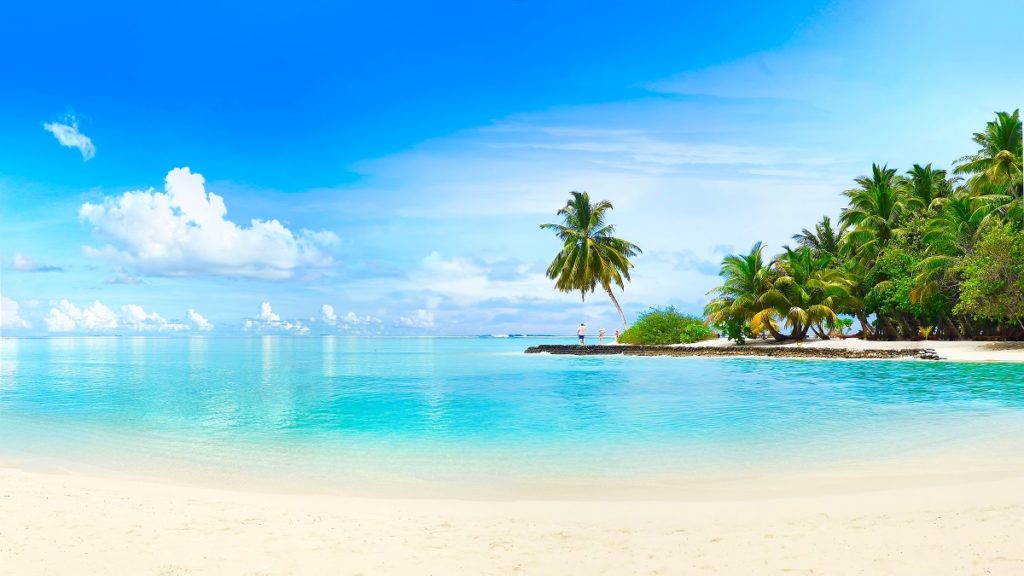
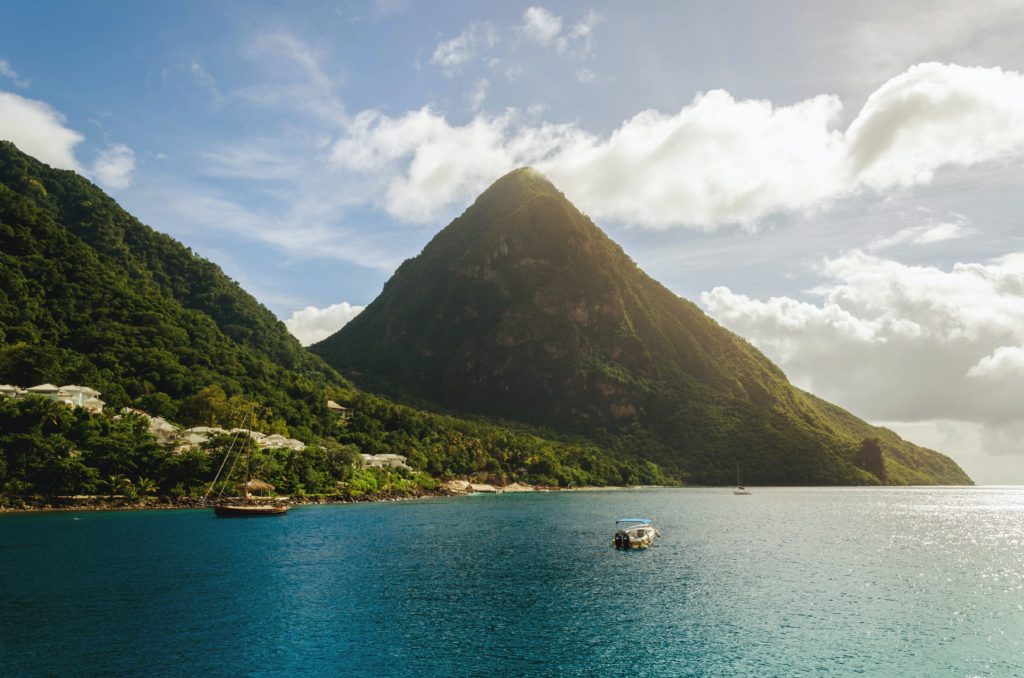
The Caribbean lures vacation travelers for so many reasons, but it’s very compelling for sailors. The region is steeped in romantic nautical history, and each island is a distinct cultural experience. And the weather, of course!
The Caribbean islands have warm and sunny weather all year round
Even in hurricane season, the weather is pretty nice. But when Europe and North America are buried in snow and ice during the deeps of winter, a white sand beach in the Caribbean becomes the clearest vision of paradise. At the worse, have a light sweater or sweatshirt on board for some cool but pleasant evenings. But it’s never cold, and days are always warm.
The Caribbean is a vast playground on a yacht
Most Caribbean sailing is easy and fun. Small islands lie within easy sail of each other, and most island nations are a day sail apart. The water is deep, the trade winds are consistent, and the sailing conditions are almost always perfect. Clear water and bright sun make navigation easy, and much of it is by line of sight.
You can have fun island hopping in archipelagos like the British Virgin Islands or St. Vincent and the Grenadines without changing countries. But sailing to another country, clearing in and out and getting a new stamp on your passport? That’s fun, too, and gives you an overnight change of scenery. Not just the landscape, but the entire culture and vibe can change with a few hours of sailing.
There are many beautiful resorts in the Caribbean where tourists come to stay for a week. But on a charter yacht? You get to see a lot of different resorts and gorgeous spots at your own pace.
Most Caribbean islands aren’t overrun by tourists
The mass tourism in the Caribbean is primarily from cruise ships, and in a charter yacht it’s easy to avoid them because you can get to places the cruise ships can not. Even with cruise ships plying the islands, there are very few highly built up and developed areas. And many places that are green, quiet, and inviting.
Certainly, there are resorts, hotels, and even some cities. But the islands also are places where people live, and there are wild places on all of them. Some islands have taken it further and leaned into ecotourism and preserving natural beauty. They build resorts to blend into the jungle and wilds or on the beaches, and the tours and activities get you out in nature.
Even at its most crowded, you’ll never have that packed theme-park experience. There’s always natural beauty and a calmer, more authentic pace of life.
Each island of the Caribbean has a distinct culture and unique history
People have lived in the Caribbean for thousands of years. Indigenous peoples like the Carib, Arawak, Taíno, and others settled the islands of the Caribbean long before the first Europeans arrived. Many of these populations didn’t survive the Europeans, but their cultural legacy still exists.
European colonization reshaped the Caribbean by establishing settlements, plantations, and military bases to further their government’s economic interests. Slaves imported in large numbers, along with European settlers and planters, swelled the population. The French, English, Spanish, Dutch, and Danish all established colonies (or tried to) and claimed various pieces of the islands. And every one of them left their mark.
The modern Caribbean has a mix of languages and cultures, with independent countries and territories from the U.K., France, and the Netherlands. A few islands are split, like Saint Martin/Sint Maarten, with its distinctive French and Dutch sides. People have mixed these histories to create their own cultural fusion, resulting in languages that combine native words, European languages, and other influences.
No matter which island you start on, every time you change ports, you’ll find something a little different.
There is a party-vibe in the Caribbean that you can’t find anywhere else
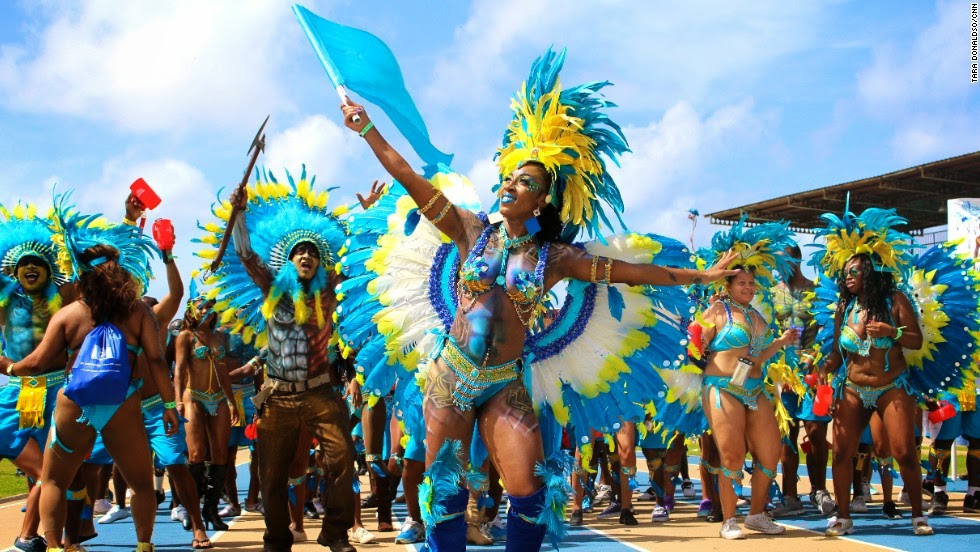
Steel drums, and the gentle lilt of Calypso music or Reggae. Rum drinks with a lot of fruit, and dancing on the sand to celebrate the full moon. An honor bar on a remote sand beach you swim to, where you mix your own drink and leave your payment. Late nights on a floating bar on a pirate island, with laughing patrons plunging into the warm water from the top decks.
And that’s not even during the carnivals!
All over the Caribbean, there’s a relaxed feel, but also an undercurrent like the music may start up any time as the drinks start to flow. From Foxy’s on Jost Van Dyke to the weekly barbecues at Shirley Heights in Antigua, there’s always something happening. Walking the streets of Tortola, you hear music. Anchored in Grenada or St. Lucia, you can hear the music from the “liming” – street festivals with music, food and drink.
Most islands have a Carnival (or Carnivale), and they time some not to conflict with other islands. You’ll never find a bigger party vibe than streets full of costumed revelers, with parades, dancing, costumes, and of course, music. Check the schedules where you’re thinking of chartering. Carnival is always worth it!
How to pick the island to charter your yacht from?
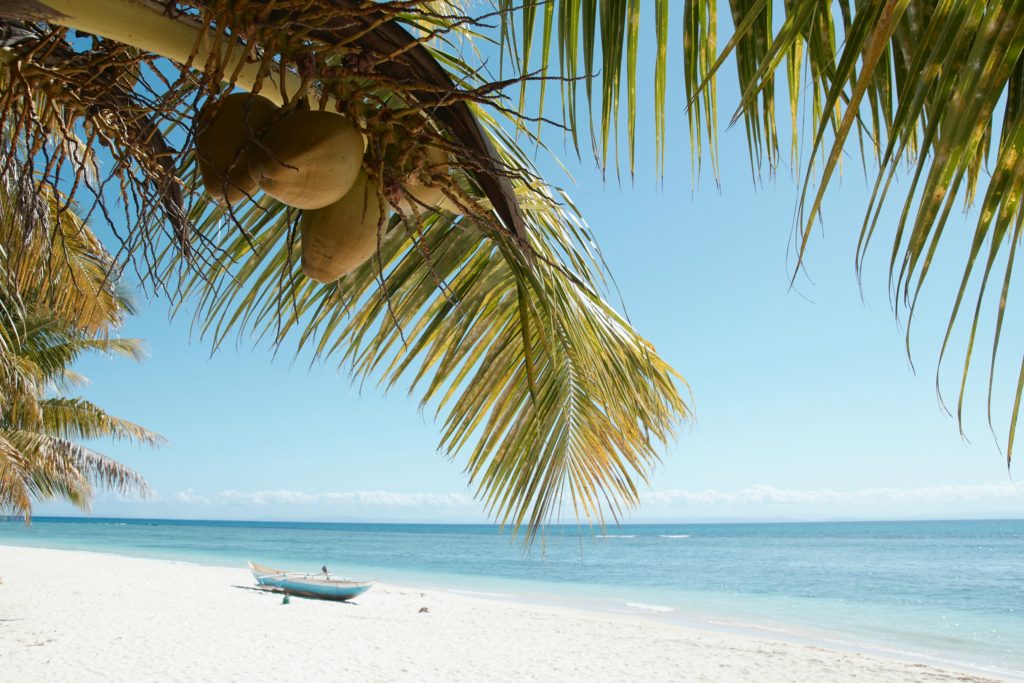
There are several large charter bases throughout the Caribbean to start your vacation. And many smaller ones, with fewer boats but also less traveled areas. Your choice of where to leave from will set the choices for your itinerary. You don’t want to spend all your days sailing between exciting places when you could experience them.
Choose for your skill and sailing expectations
Different parts of the Caribbean require different skill levels to sail. The reasons for this vary by location, geography, and weather. The Greater Antilles is not as popular for charters because the islands are farther apart and there are fewer smaller islands and harbors for easy sailing. It’s just more challenging.
If you’re chartering a sailboat, you obviously like to sail. But consider how much time you want to spend sailing versus spending time on shore exploring or anchored for snorkeling, diving, and swimming.
One of the big attractions of the Virgin Islands, for example, is that while the sailing is excellent, most of the sails are fairly short. You can have a relaxing morning, sail to a new island or harbor, and still have time to enjoy the afternoon and evening there. If you’ve got an eight-hour sail between anchorages, you’ll spend a lot more time sailing than you spend on land. Which isn’t a problem if that’s what you want, but it’s an important factor in the waters you choose.
Your skill and your crew’s comfort also make a big difference. The sailing in the Virgin Islands is easy and comfortable, but not very challenging. Crossing from St. Lucia to Martinique is a greater challenge that goes beyond line-of-sight navigation. But everyone on board needs to be comfortable to have fun.
Pick a Caribbean island that fits the vibe you are looking for
Are your interests primarily in eco-tourism and snorkeling? Or do you prefer fine dining and shopping? Is your idea of nightlife drinks and dancing at a beach bar, or watching the stars under an open sky without light pollution?
There is a wide variety of choices in what you want experience on your charter vacation, and where you go sets the tone. Of course, that doesn’t mean you’re limited to just one tone. Dominica’s jungle hikes and waterfalls are just a day’s sail away from the restaurants, rum distilleries, and shopping centers in Martinique.
When you’re planning your itinerary, look closely at where you’re starting from. Because you will do most of your sailing near there, and the feel of that country doesn’t change if you don’t range too far.
In the Caribbean, you can choose an island based on your language as English, French, and Spanish are widely spoken.
With most Europeans having some English to go with their native tongue, communication in the Caribbean isn’t a problem in most places. But language has a strong affect on some areas, and you may enjoy yourself more somewhere where communication is easy.
Then again, we don’t travel to foreign countries to embrace the familiar!
It’s not that you can’t have a great time in a place like Guadeloupe if you don’t speak French. You’ll just have an easier time of it, and there absolutely will be people who speak enough English or other languages to communicate with you.
There is a very strong cultural tie between the countries with similar languages. The food is a good example – the French islands have a very strong French influence on the cuisine, which you won’t find at all in the English islands. The culture on each island is a unique blend of European, Caribbean, African, and other influences.
Some islands are more convenient for flights
You can fly to any Caribbean island, but not always direct. Some islands may be more of an adventure to get to, since major carriers from Europe and the U.S. may not land large jets in the smallest airports. Smaller islands may require you to take one or more local connecting flights on commuter planes.
There’s a wide variety in prices between Caribbean islands
Budget is a big factor in picking your island. There’s a broad disparity between prices, expenses and the standard of living in different countries. Some islands are fairly under developed, and local goods and services may be relatively inexpensive. Other islands have become exclusive hotspots for the wealthy tourists and resorts, and you’ll spend a lot more on dining out and excursions.
There is very little manufacturing in the Caribbean, and farming and food production are very localized. What you buy in stores and eat in restaurants is mostly imported. The cost of many common goods in the U.S. and Europe might surprise you anywhere, so you shouldn’t expect a cheap vacation. But where you charter will affect your budget.
Duty-free shopping is available in many countries as an incentive to tourism, basic goods, services, and lodging are strongly affected by the local economy and the need to import goods. Alcohol can be expensive, but different rules often apply to goods produced in different countries. And local rum, beer, and other drinks are usually more reasonable and fun to try.
Island hopping in the Caribbean is easy
Whether you’re on a boat or flying, there’s always a different island close by. In the Windward and Leeward islands, there’s always a different island within a few hours sail. Or an even shorter flight. It’s not unheard of to make a day trip by air to another island with nothing more than a purse or day bag.
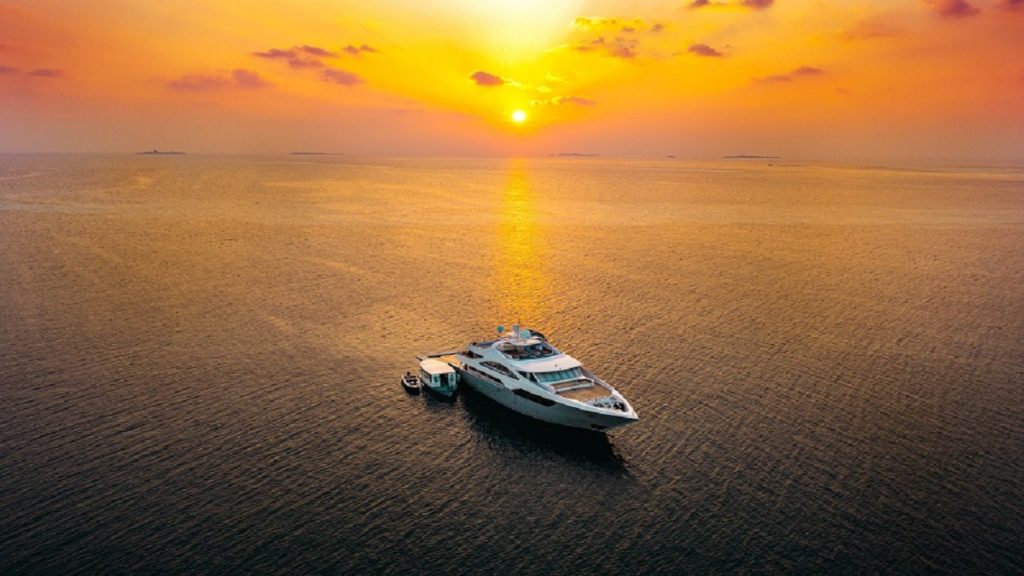
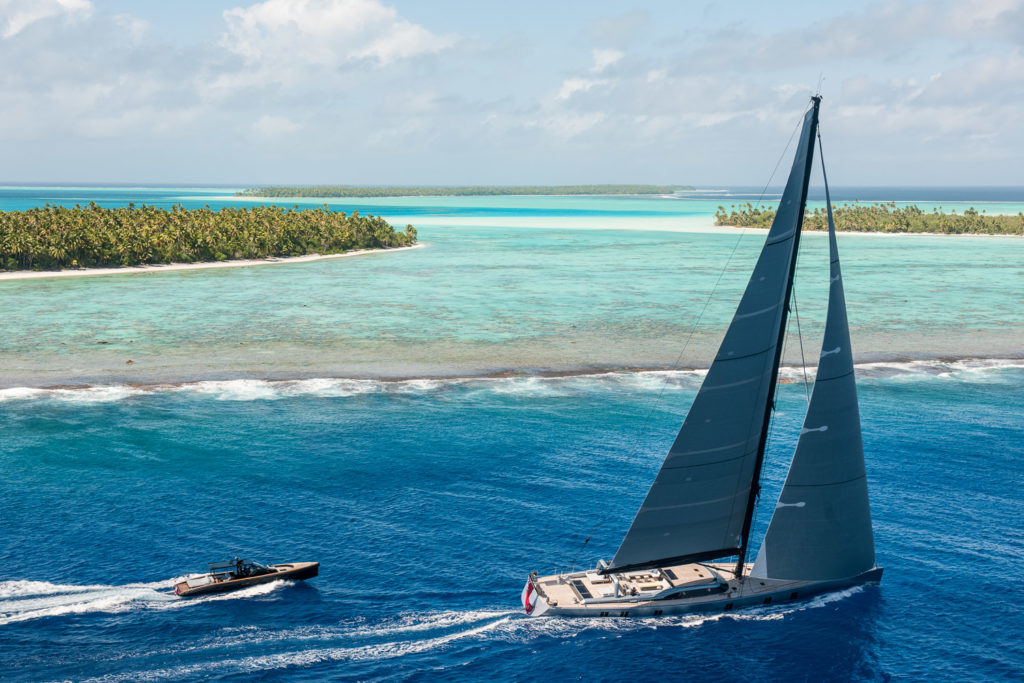
Getting to the Caribbean
Most of the Caribbean is easy to get to from Europe and the United States. Most flights from the U.S. connect through somewhere in Florida, to shorten the last flight. Direct flights are available from all the major European capitols, though you may need to connect on regional airlines for some islands.
Visas and paperwork
If you’re flying in to one country for your charter and not leaving it, you’ll do all your clearing in at the airport. Visa waiver treaties allow you to visit most Caribbean countries without a complicated visa proc’re from a participating country. Everyone in your party will need a passport, of course, but any visas or stamps will happen when you arrive.
If you plan to sail between countries on your charter, visas shouldn’t pose a challenge, either. Check with your charter company for specifics, as they may have restrictions and rules about sailing ranges. And they also have paperwork you’ll need to clear the boat in when you arrive.
Flying to the islands
Flights from the United States are shorter and more numerous, but there are plenty of flights from Europe even if they’re longer because of the distance.
No matter where you’re coming from, start looking at flights before you book your charter. Look closely when booking a major carrier headed to a smaller island. There’s a chance your last hop will be on a smaller inter-island plane. So make sure you meet all the baggage requirements and limits if you have to island hop.
Flying between the islands
Regional airlines connect all the islands, so check schedules for brief visits or extended stays. Most of the planes are smaller commuter planes, and may have limitations on baggage weights, so plan well.
Currency Conversions and Payments
Because there are multiple countries and legal jurisdictions in the Caribbean, there are also many currencies. While larger businesses take credit and debit cards, your bank may charge international transaction fees, even if the island nation uses the same currency.
Much of the Caribbean has standardized on the East Caribbean Dollar (XCD) which has a fixed conversion rate to U.S. dollars at $1.00 USD = $2.70 XCD. Other countries may use U.S. Dollars, Euros, or other currency.
Sometimes you can pay for things with different currencies on the spot, but don’t expect a good exchange rate. No one must accept foreign currency, and many don’t want the hassle unless you’re paying a lot more than you need to. So it’s a good idea to get a few local bills in your pocket when you arrive. It will ease your way and save you overpaying with big foreign bills.
What are the most popular destinations for yacht charters in the Caribbean?
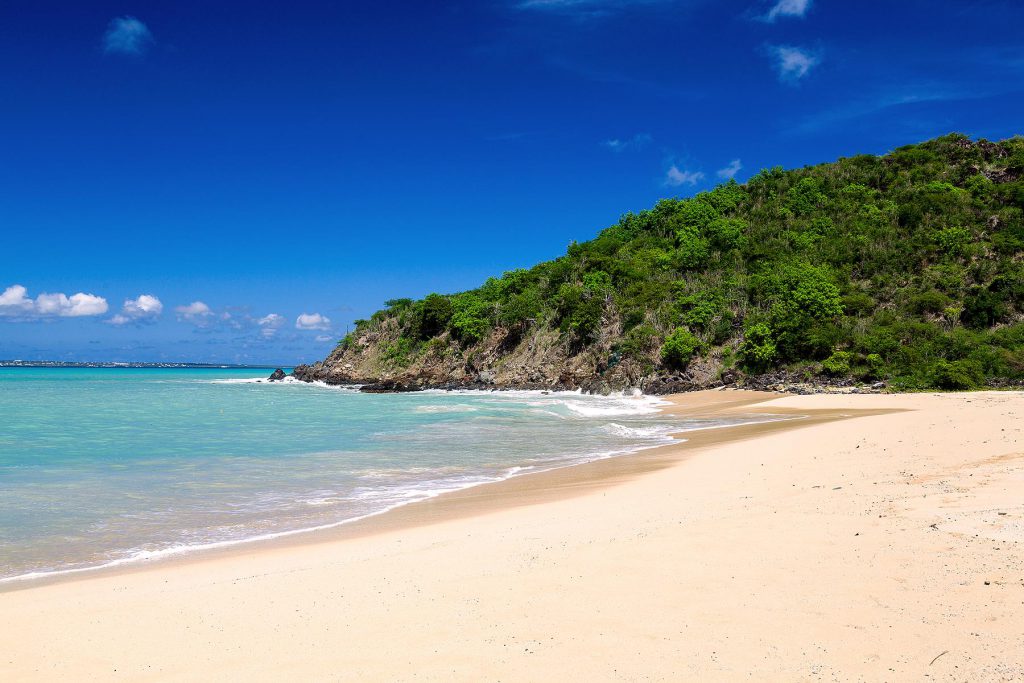
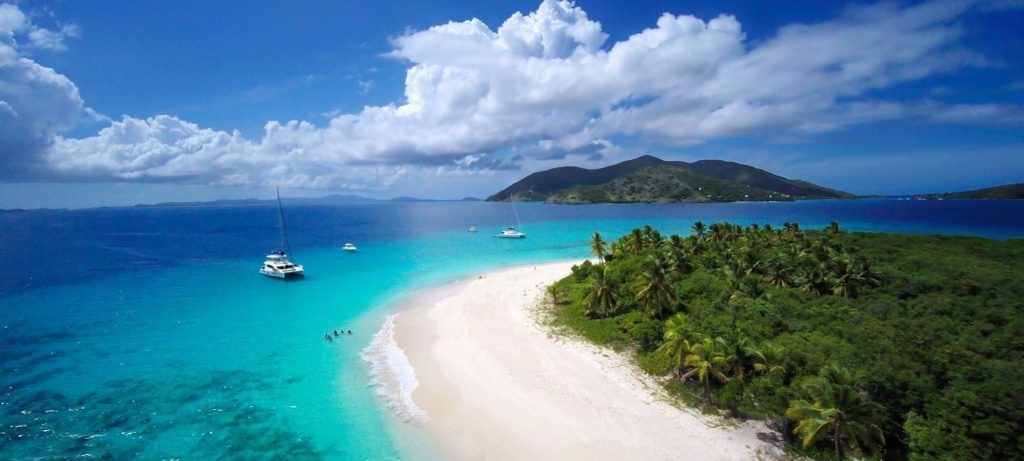
The Caribbean has over 700 islands, reefs and cays grouped into thirty different political territories. Some are very easy and popular for chartering, and many are less accessible. Islands without charter bases are still interesting to visit. But some islands like Cuba can be logistically and politically difficult to visit for a vacation, especially on a U.S. passport.
The Dominican Republic and Haiti have difficulties because of their exposed coastlines and distance from other islands. It’s not that you can’t charter in these places, but there’s a reason other places are more popular.
The most popular destinations have visa waivers with the US, EU/Schengen areas, UK, and other countries. So pre-approved visas are not needed if your passport is from those nations.
You’ll find multiple languages spoken on most islands, including creoles and local dialects. So even if you don’t speak the language, there’s a good chance you’ll find someone who speaks a language you do.
U.S. Virgin Islands (USVI)
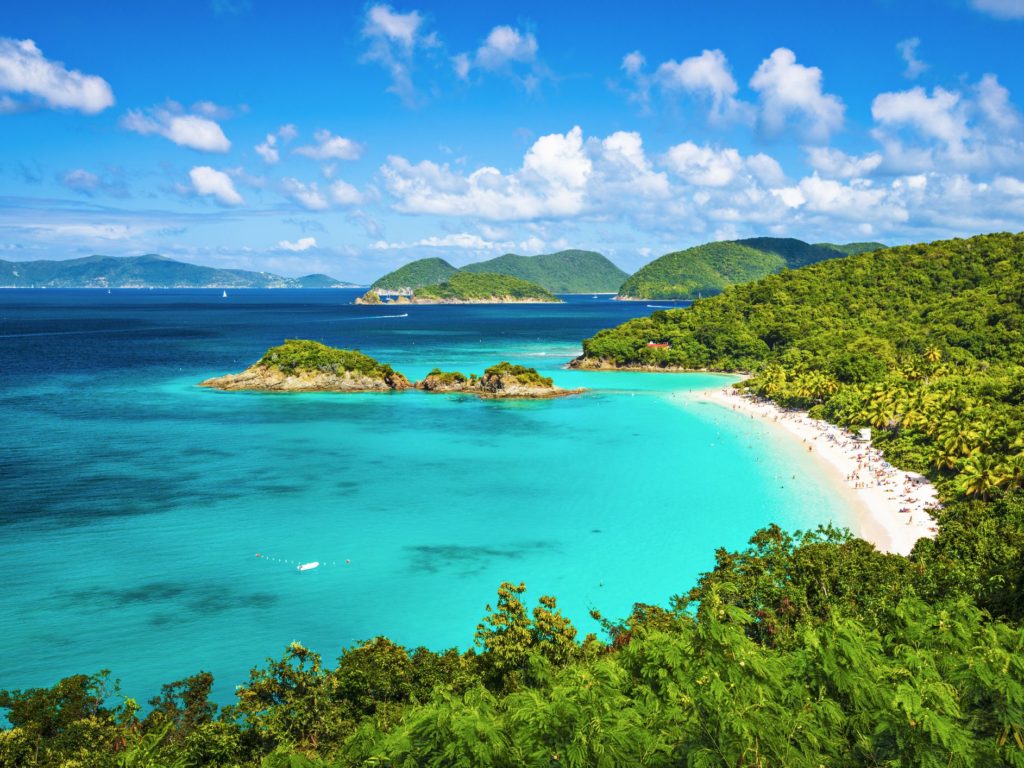
Primary Language: English
Government: United States territory
Currency: U.S. Dollars (USD)
The islands of St. Thomas, St. John, and St. Croix make up the main U.S. Virgin Islands (USVI). Scattered near these are about fifty other islands and cays.
English is the primary spoken language. The airport at St. Thomas is easy to fly into, with many options from Europe and North America.
Many charters boats base out of St. Thomas for cruising the U.S. and the British Virgin Islands. It’s the most developed island in the USVIs, and the best place to provision your charter and shop for duty-free goods. Many restaurants can be found in the capital, Charlotte Amalie, and hotels and resorts are scattered around the island. St. John and St. Croix are less built up, with national park preserves and smaller towns and facilities.
Cruise ships also leave from Charlotte Amalie and stop there, so it can be a bustling port when the ships are in.
British Virgin Islands (BVI)
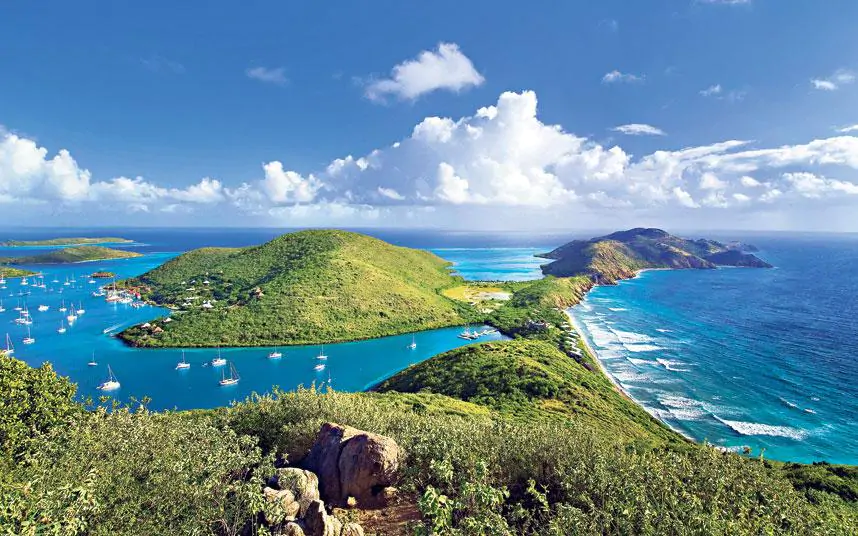
Primary Language: English
Government: British Overseas Territory
Currency: U.S. Dollar (USD)
The BVIs archipelago has over 50 islands and cays. Sixteen have permanent populations, but Tortola, Virgin Gorda, Anegada and Jost Van Dyke.
International flights to Beef Island (connected to Tortola) are plentiful. BVI charterers sometimes fly into St. Thomas and take a ferry to their boat if they’re chartering out of Tortola. The primary charter bases for the BVIs are in Road Town, Tortola, as is the best shopping for provisions and liquor.
The BVIs are less built up than the USVIs, though resorts, restaurants, and bars are scattered throughout the populated islands. The populated islands are known for some of their night life and social hot spots, like Foxy’s and the Soggy Dollar on Jost Van Dyke, or the Willie T on Norman Island.
Read also: Best 8 and 10 Days British Virgin Islands Sailing Itineraries – Our Recommendations
Anguilla
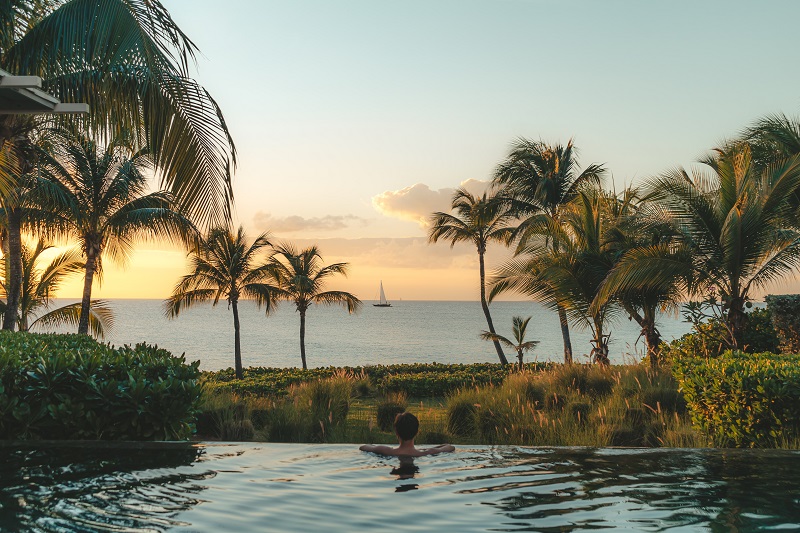
Primary Language: English
Government: British Overseas Territory
Currency: East Caribbean Dollar (XCD)
Anguilla doesn’t have charter operations for smaller boats, though you often can charter larger yachts from there. It’s a quiet island with a small, welcoming population and much natural beauty.
While it’s a quick sail from St. Martin, many visitors don’t venture beyond Road Bay because of the expensive cruising permit required for the nearby islands. Check with your captain. He may have arrangements in place for a permit, or can arrange one for you.
Saint Martin/Sint Maarten (SXM)
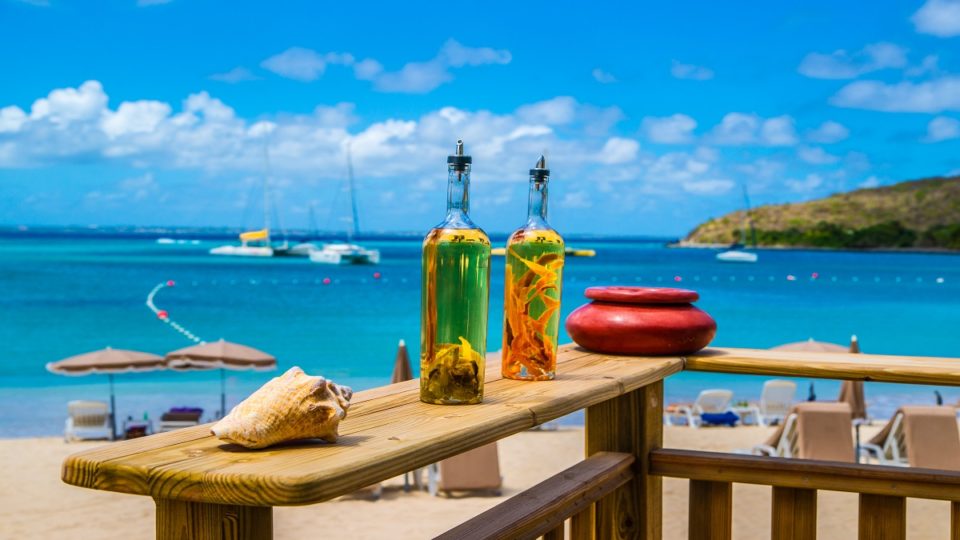
Primary Language: French/Dutch, English
Government: Collectivity of France/Constituent Country of the Kingdom of the Netherlands
Currency: Euro (EUR)/Netherlands Antillean Guilder (ANG)
The island of Saint Martin is politically and culturally divided into two halves, with one half French and the other Dutch. Each side is distinctive and different. The island has many hotels and resorts, and is a great place to visit for the excellent dining and nightlife, as well as the beautiful beaches and water.
You can charter yachts from St. Martin for destinations around the island and excursions to the Anguilla, St. Barths, and Tintamarre. See below a glance of cruising itinerary around Saint Martin, Saint Barth and Anguilla.
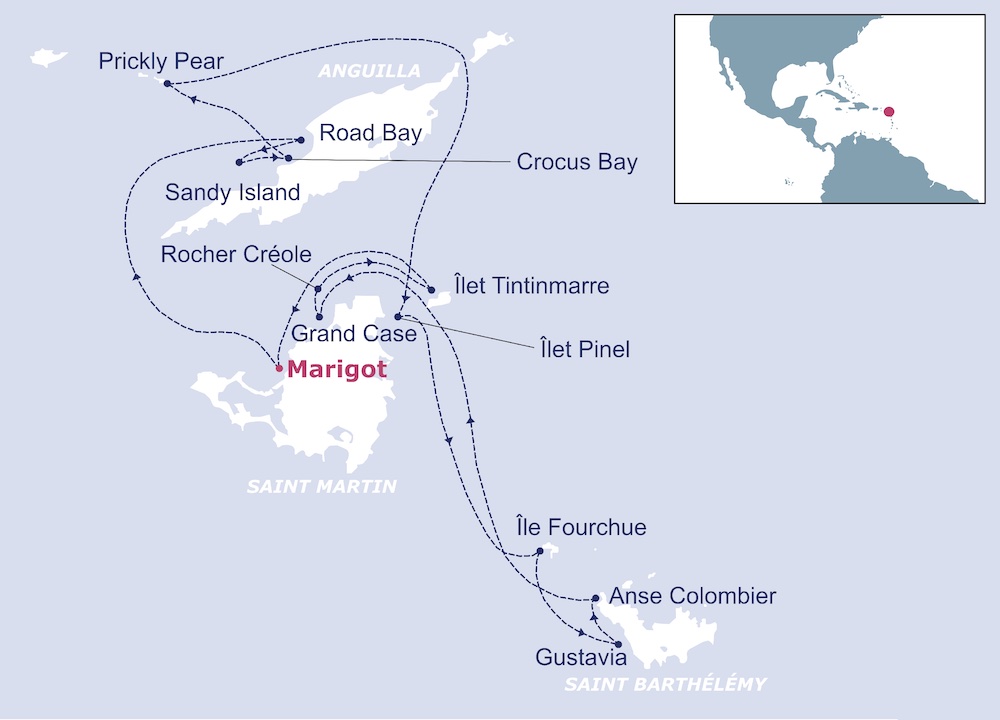
Phillipsburg, on the Dutch side, is a large cruise ship port, and there can be a sizeable crowd when multiple ships land passengers at the same time. The largest town on the French side, Marigot, is quieter. But the island is small enough that buses and taxis can get you (and the cruise ship tourists) anywhere. The airport in Sint Maarten on the Dutch side is one of the busiest in the Caribbean with plenty of flights.
Saint Barts (St. Barth, St. Barthelemy)
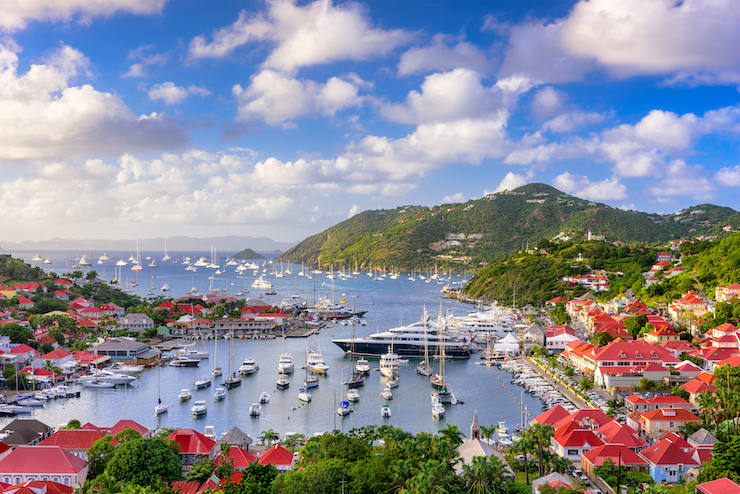
Primary Language: French
Government: Collectivity of France
Currency: Euro (EUR)
St. Barts is a beautiful French island, with smaller hotels and villas and good dining and shopping. It’s known for being more of a high end destination, but it also has a gorgeous marine preserve in its outer waters. It’s also one of the smallest island populations in the Caribbean, and not very crowded.
Yacht charters are very diverse in St Barth, mortoryacht, catamarans, Sailing yachts, you will have the choice. But it’s a very popular stop on charters out of St. Martin and Antigua. So if you’re looking for a quieter place with gorgeous beaches, great dining, and duty-free shopping, it’s an excellent place to sail.
Antigua and Barbuda
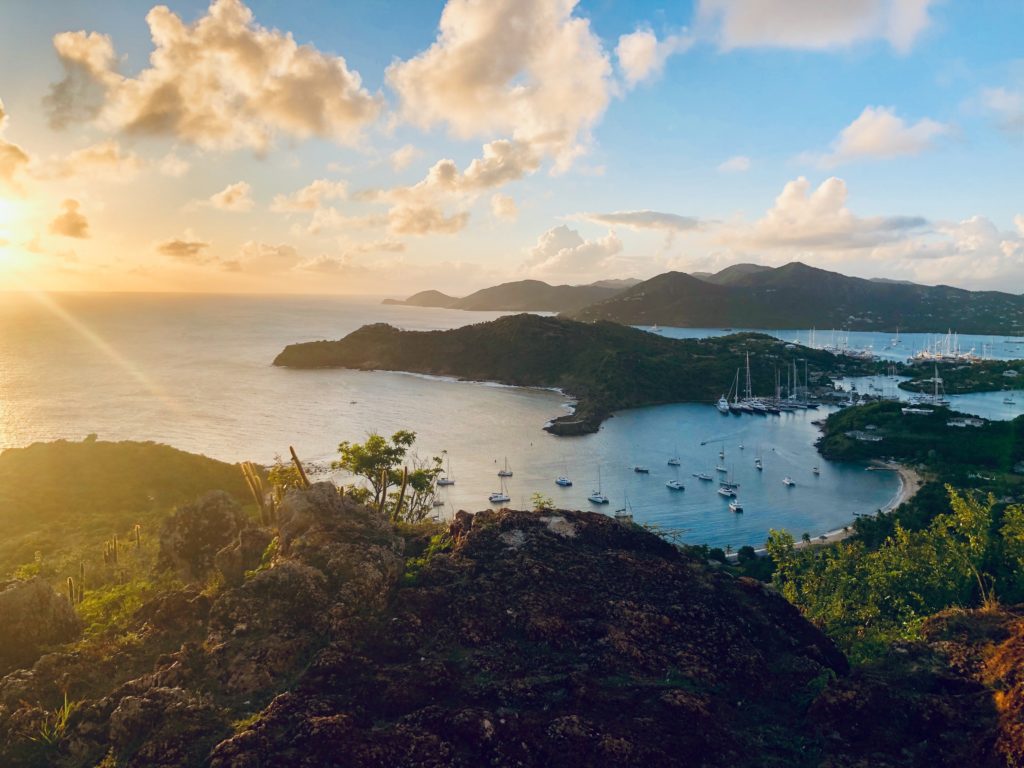
Primary Language: English
Government: Sovereign Nation
Currency: East Caribbean Dollar (XCD)
English Harbour and Jolly Harbour are yachting centers with charter bases, and Falmouth is a popular destination for yachts of all sizes. You can sail to nearby islands from Antigua, including Barbuda and St. Kitts and Nevis and other smaller islands.
St. Johns can be a busy port for cruise ships, and isn’t a popular spot to visit on your charter. But the rest of the island has many beautiful anchorages to enjoy. Don’t miss the weekly barbecue on Shirley Heights with sunset views over English Harbour. The Falmouth area has great dining and nightlife.
Lying an easy sail to the North, Barbuda is a quiet destination for ecotourism and natural beauty. After Hurricane Irma in 2017, the island suffered severe damage and authorities evacuated it completely. There has been a constant rebuilding effort since then, and visitors are now encouraged.
Many direct flights from North America and Europe land in the capital, St. Johns.
Guadeloupe
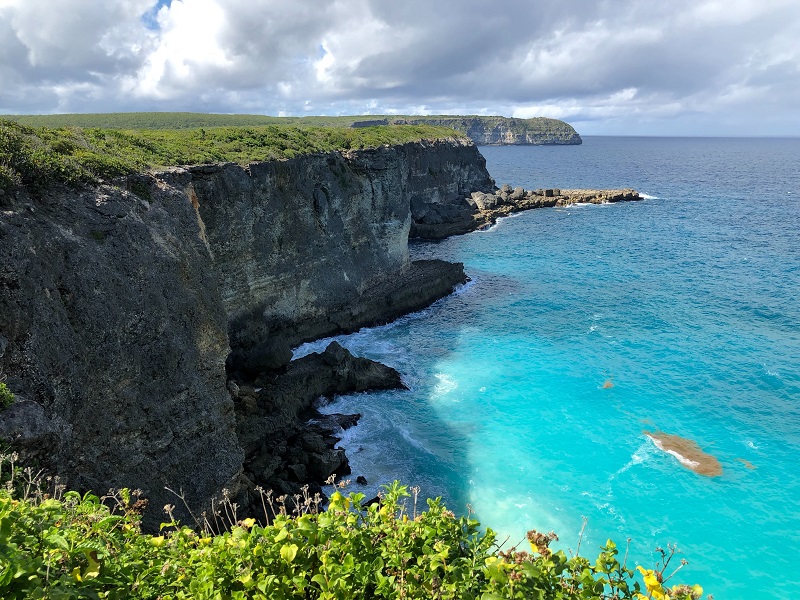
Primary Language: French
Government: Overseas Department of France
Currency: Euro (EUR)
If you’re looking for a French island experience that’s a little more moderate than St. Barts, Guadeloupe has everything you might want. Though it’s one of the higher population islands, it has several nice coastal villages and beautiful parks. It’s more off the mainstream of Caribbean tourism.
Two-thirds of the main island is nature reserve. The Cousteau Reserve around Pigeon Island off Basse-Terre is also a major destination for diving. Outside the main island, you can explore Marie-Galante, La Désirade, and Les Saints, a group of eight smaller islands south of Basse Terre.
Guadeloupe is easy to reach with flights from all over Europe, and from Miami, New York, and Montreal.
Dominica
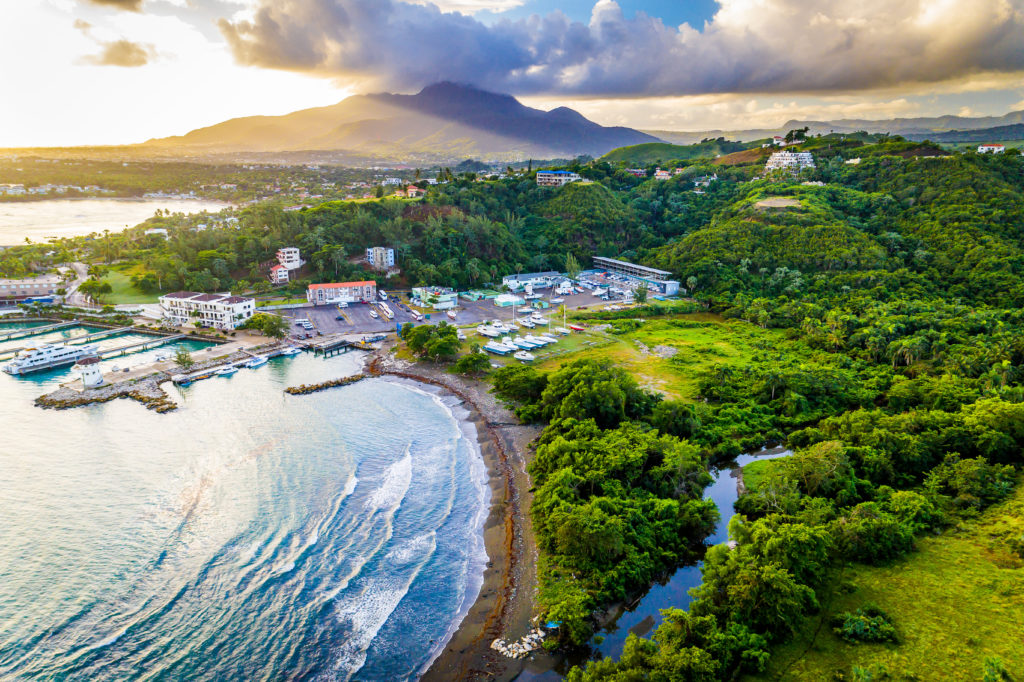
Primary Language: English
Government: Sovereign Nation
Currency: East Caribbean Dollar (XCD)
If you’re looking for lower traffic and lots of pristine eco-tourism, then Dominica should be on your itinerary. It’s one of the least developed of the Caribbean nations, with few large towns and lots of rivers, jungles, and natural beauty to explore. You go there for the waterfalls, rainforests, and rivers, not the nightlife.
Make plans for snorkeling or diving, and arrangements with local guides to see some of the best sights on the island.
Dominica is also one of the least expensive islands in the Eastern Caribbean, and there are only a handful of boats available for charter origination. Direct flights from Europe are limited, so you will need a connection. Many visitors charter out of nearby Martinique or Guadeloupe and make the short sail to Dominica part of their itinerary.
Martinique
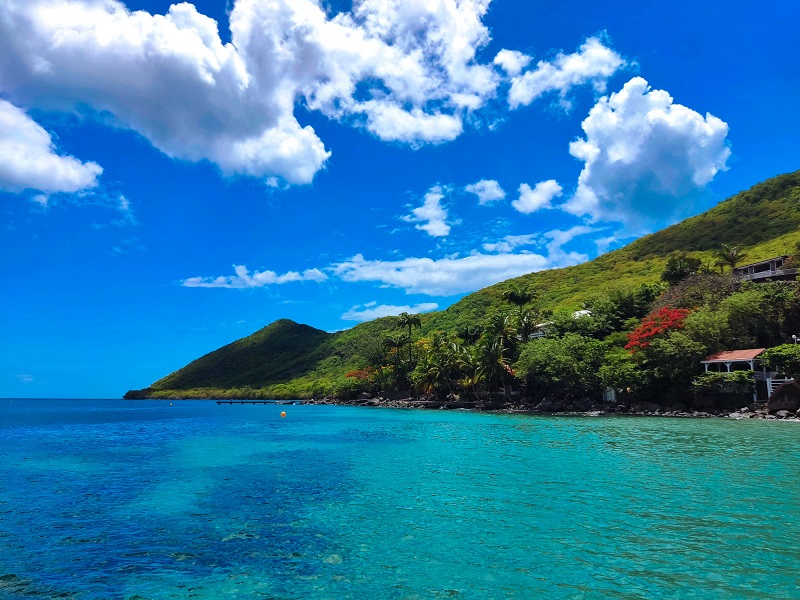
Primary Language: French
Government: Collectivity of France
Currency: Euro (EUR)
Martinique is a populous island, with well developed and modern shopping, dining, and marine facilities. Many charter boats operate out of the island, and there are good choices for direct flights from Europe and North America.
Like all the Caribbean islands, Martinique has gorgeous beaches and many beautiful spots to anchor and go ashore. You can easily spend a week’s charter on the west coast, checking our rum distilleries, villages, and looking for the perfect sunset. More experienced charterers can also head to Dominica or St. Lucia for more variety, and on longer charters venture to St. Vincent and the Grenadines.
Chartering out of Martinique is perfect if you’re looking for a mix of natural beauty with a touch of civilization and delightful French culture.
Saint Lucia

Primary Language: English
Government: Sovereign Nation
Currency: East Caribbean Dollar (XCD)
It’s easier to get directly to St. Lucia from the United States and the United Kingdom, but it’s worth making the island hop if you’re coming from in the EU. There are plenty of boats to charter, and it’s a popular starting point to charters that head to St. Vincent and the Grenadines.
Not that Saint Lucia is without its own charms. The Pitons are some of the most iconic volcanic mountains in the Caribbean, and pleasant anchorages and beaches dot the coastline. The island is also known for its love of parties and music. It’s not always a quiet place in every harbor, but there’s almost something going on in town, like the weekly Friday night street party in Rodney Bay.
On the island, you’ll find good dining and services, and you can make sure your charter is well provisioned before you leave.
Barbados
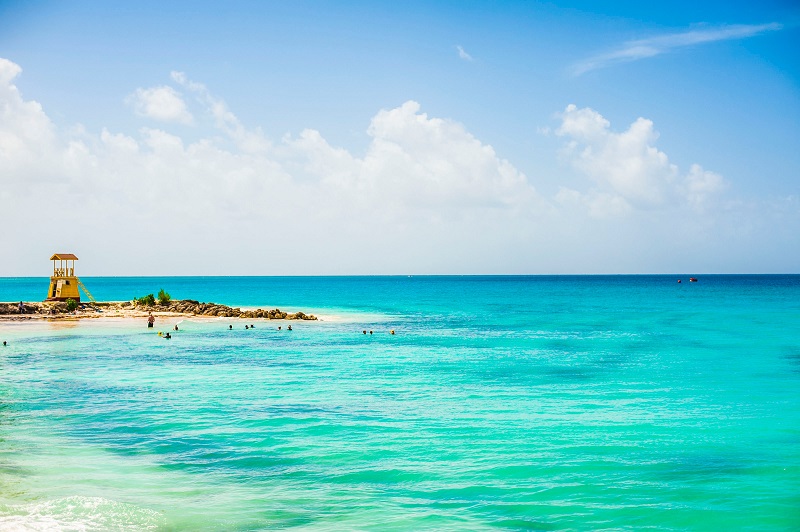
Primary Language: English
Government: Sovereign Nation
Currency: Barbadian Dollar (BBD)
It’s a lot easier to fly to Barbados than to sail there. Plenty of flights from Europe and North America can get you to this special island. But the trade winds from the Southeast make Barbados a long and challenging upwind sail from the rest of the Caribbean. Few charter boats visit, and most sailing charters stay local because they don’t want to sail back upwind.
Although Barbados doesn’t have as many yachting opportunities as other islands, you can still enjoy day charters, private charters, and luxury yachts for cruising.
Saint Vincent and the Grenadines (SVG)
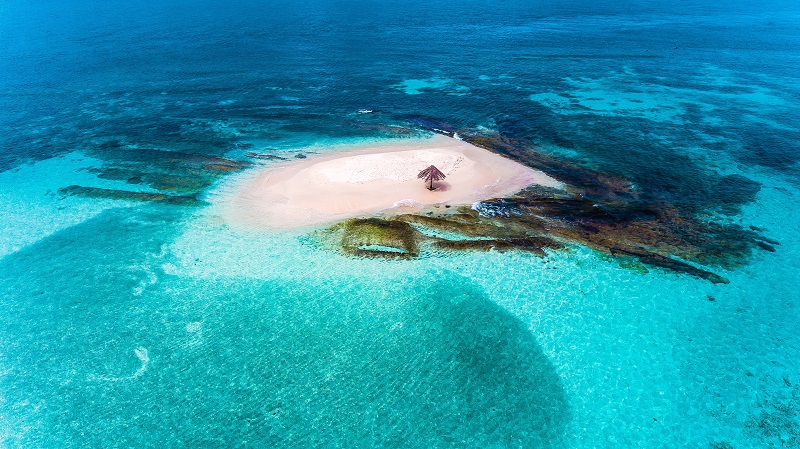
Primary Language: English
Government: Sovereign Nation
Currency: East Caribbean Dollar (XCD)
St. Vincent and the Grenadines has thirty-two islands, perfect for a sailing vacation. The Tobago Cays are a highlight of any trip. You can explore the crystal clear waters, coral reefs, turtle sanctuary, and beautiful sandy beaches. But that’s only one lovely destination of many islands.
Each of the populated islands has a slightly different feel, and they’re all one easy sail from one another. Most charters start in St. Vincent, where you work your way down island to Mayreau to stage for the Cays. Along the way, enjoy restaurants in Bequia, beach barbecues, unspoiled waters, and quiet beauty.
Sample itinerary around Saint Vincent and the grenadines
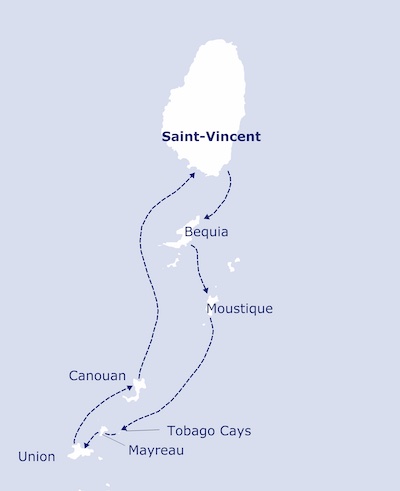
Getting to SVG from Europe is more challenging, as direct flights currently only run from the U.S. and Canada. But flights from Martinique and St. Lucia are short, so there are plenty of options.
Grenada
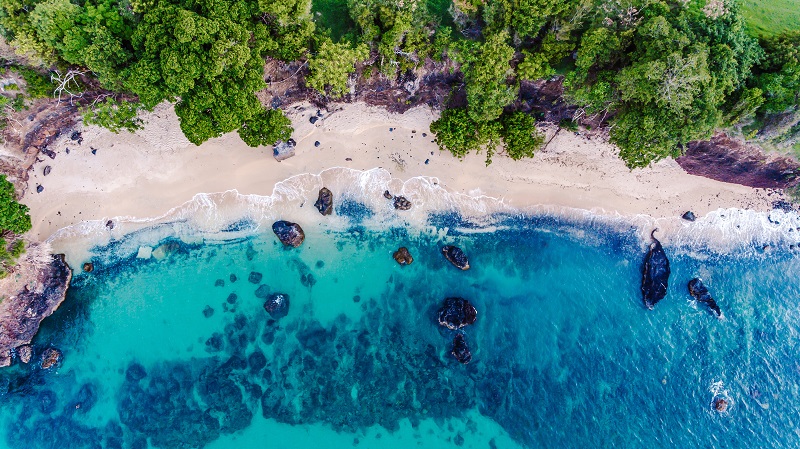
Primary Language: English
Government: Sovereign Nation
Currency: East Caribbean Dollar (XCD)
It’s easy to get to Grenada from North America, but you may need connections from Europe. The “spice island” has much natural beauty and is a popular spot for cruisers as a safe spot to spend hurricane season.
You can sail to Carriacou, Petite Martinique, and even St. Vincent and the Grenadines on a yacht charter out of Georgetown. Grenada’s interior has beautiful waterfalls and good ecotourism. Of course, there are also lovely beaches.
Grenada is a great charter destination during hurricane season because it is less likely to be affected by hurricanes. Grenada’s carnival, or Spicemas, is a riot of color, music and dance which is not to be missed if you visit in August.
Trinidad and Tobago
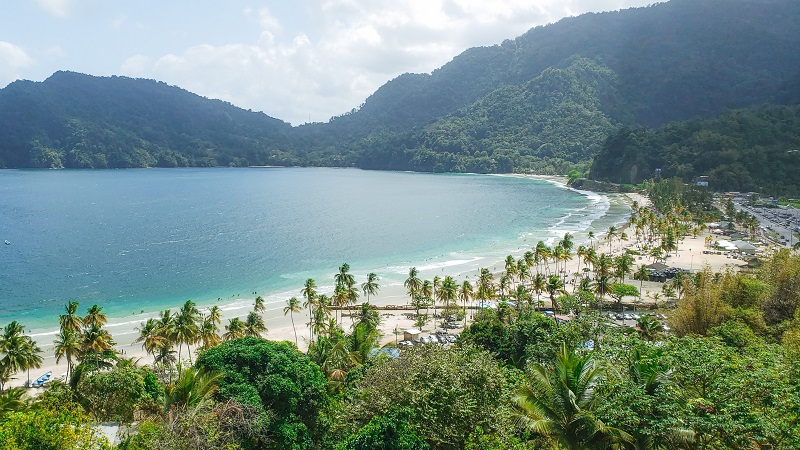
Primary Language: English
Government: Sovereign Nation
Currency: Trinidad and Tobago Dollar (TTD)
Trinidad is unlike much of the Eastern Caribbean, culturally, geographically, and economically. It sits on the South American continental shelf and is not a volcanic island like so many of its neighbors to the north.
You’ll see gorgeous waters, jungles and beaches. But the local wildlife has more in common with South America, where the island once connected. Trinidad and Tobago have a stunning diversity of plants, mammals, and birds. It’s a top global destination for birders, but there are so many other animals there that you’ll want to go inland for some tours.
Boat charter availability is limited, but there are luxury charters which can easily explore the islands. It is possible to sail from Grenada, but you will need to secure permission from the charter company, as it is a long sail. Flights to Trinidad are readily available.
Pulling it all together and booking!
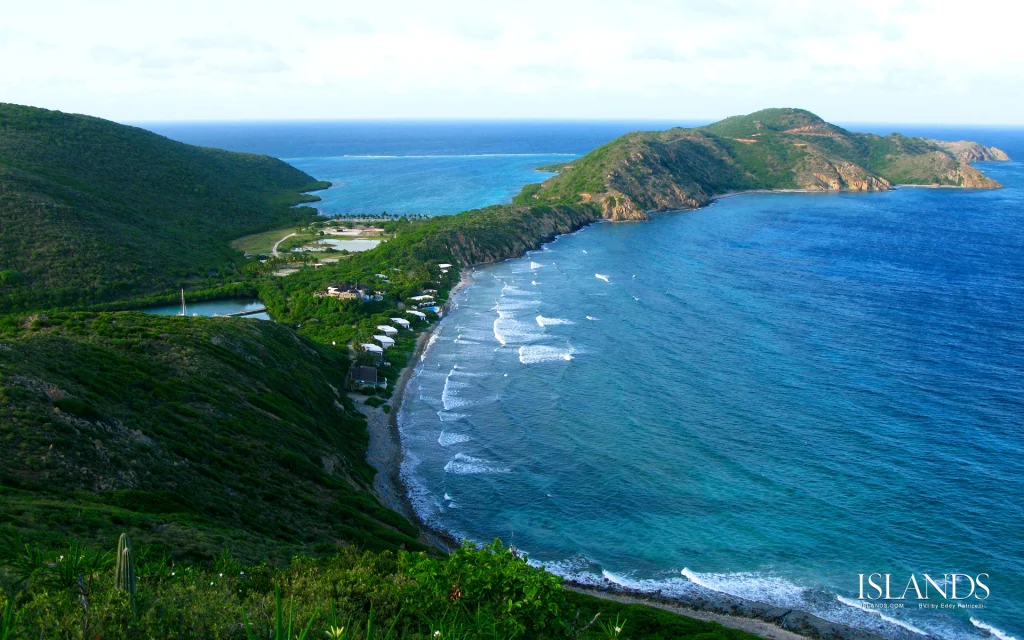
There’s a lot to think about when you’re planning your vacation, but it still comes down to the questions of who, when, where, and what. We already know why!
So consider your:
- Charter party – who is coming along? This dictates boat size, and may direct where you charter.
- Budget – how big of a boat do you need for that party, and do you want or need crew?
- Timing – can picking a shoulder or off season help fit your budget?
- Location – is there anything special you want to see or do?
Finally, what do you plan to do with your vacation time? Are you a nightlife and fine dining person, or is snorkeling, diving or hiking up waterfalls more your speed? You can have both, it just takes a litt.
Read also: Bahamas vs Seychelles : which one should you pick?

